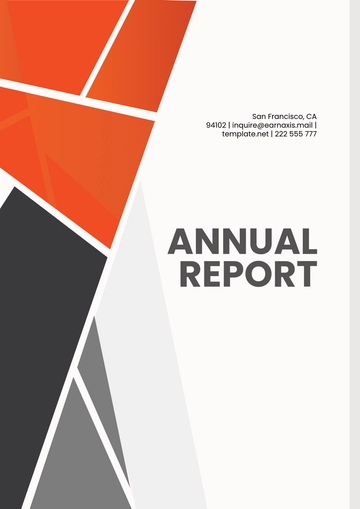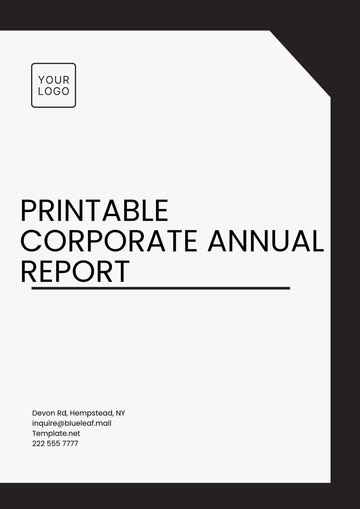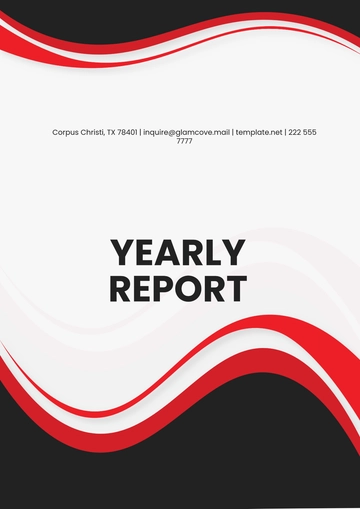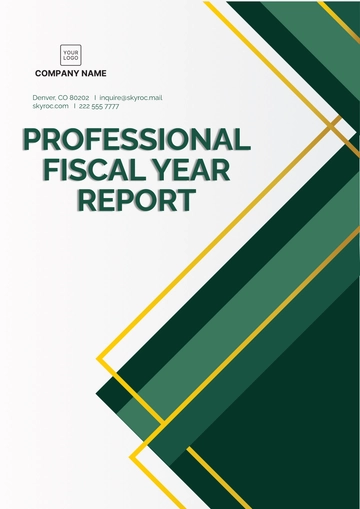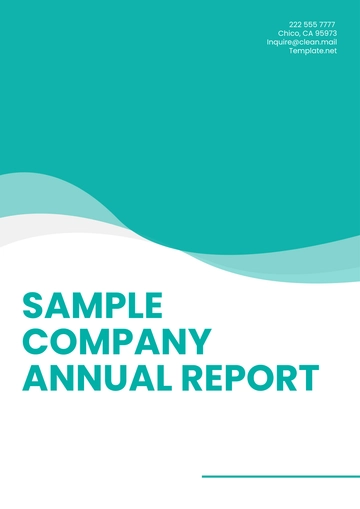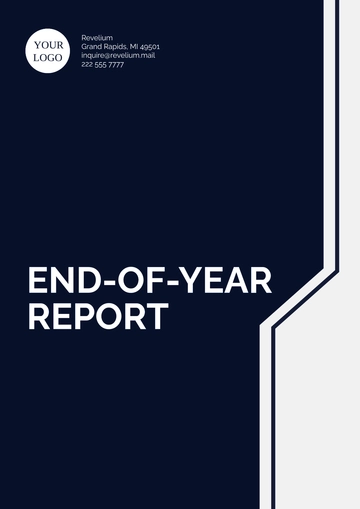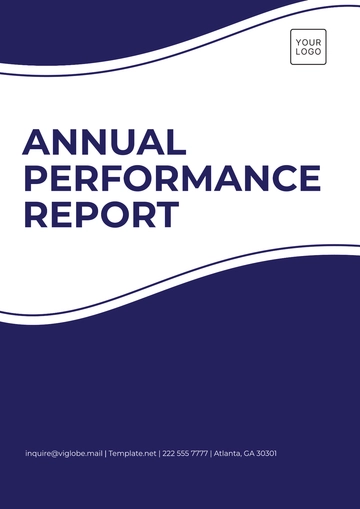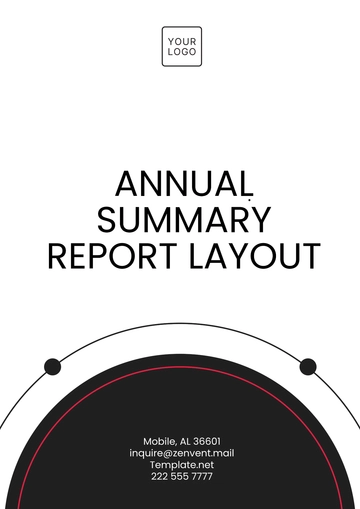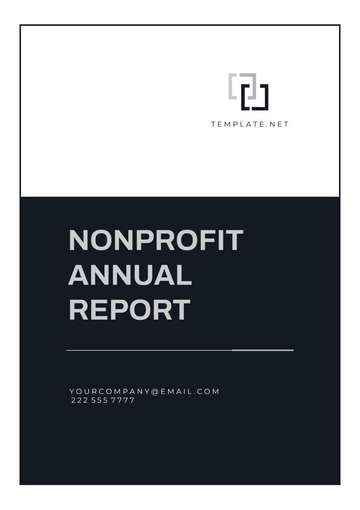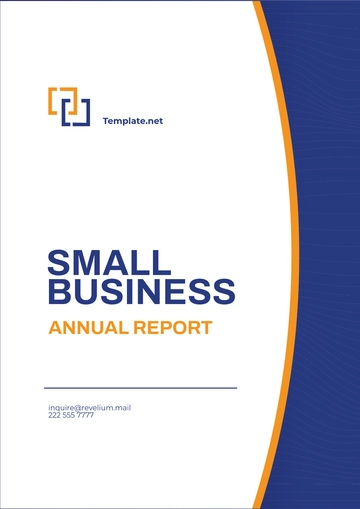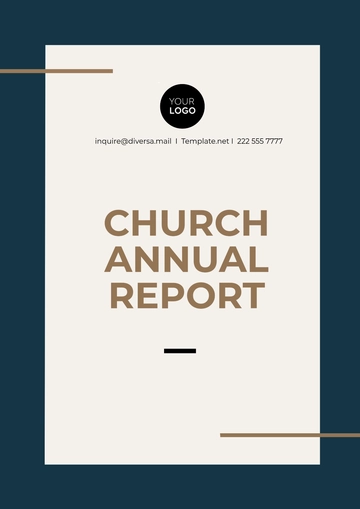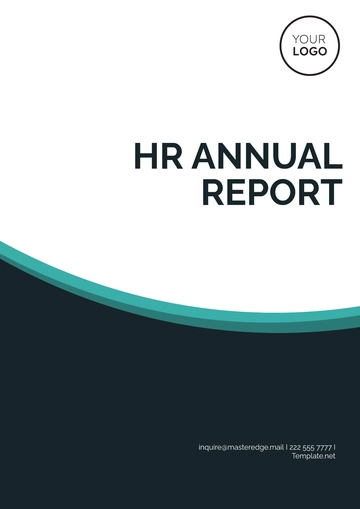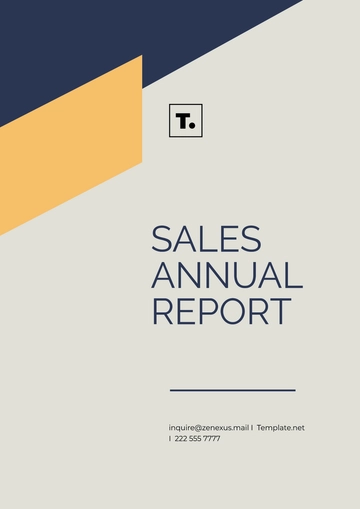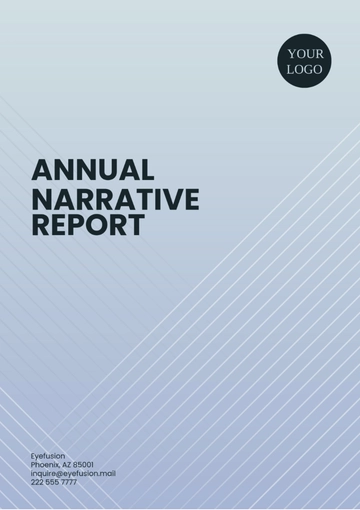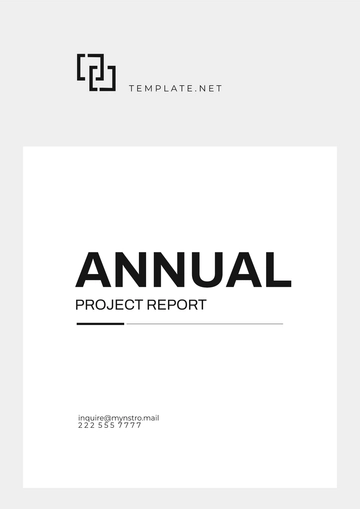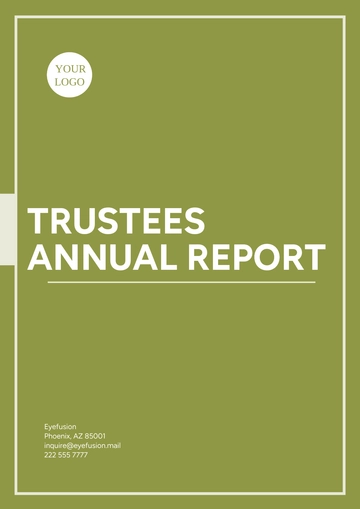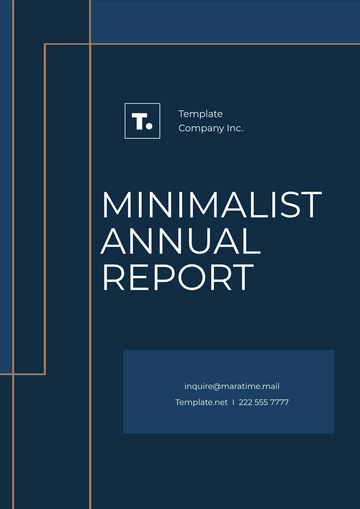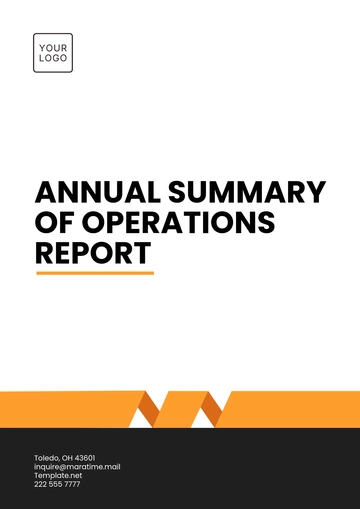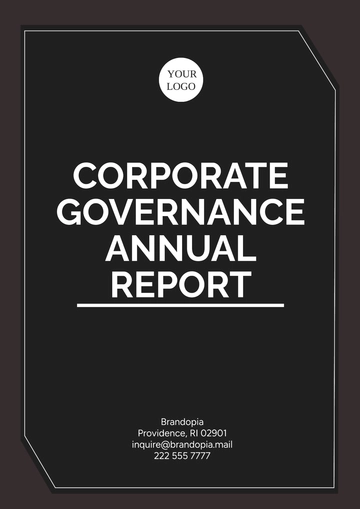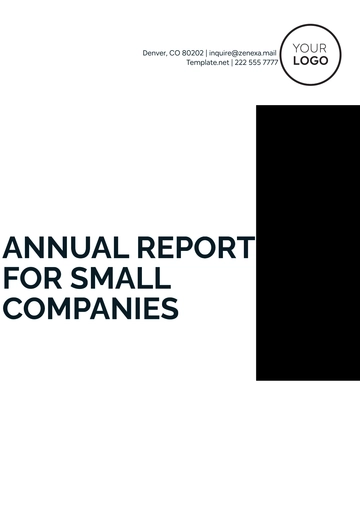Free Sales Annual Report on Trade Show ROI

Introduction
[Your Company Name] is a leading provider of innovative solutions with a focus on quality and customer satisfaction, the company has gained a competitive edge in the market. Participation in trade shows has historically been a cornerstone in our marketing strategy to expand brand awareness and generate high-quality leads.
Executive Summary
The objective of this report is to scrutinize the Return on Investment (ROI) derived from our trade show engagements during [Period]. This report encompasses performance metrics to ensure the highest level of accuracy and compliance. The overarching aim is to provide a nuanced understanding that empowers stakeholders to make informed decisions for future trade show initiatives.
Methodology
This section provides an explanation of the techniques and approaches employed to collect, analyze, and interpret data related to trade show ROI. Herein, we elaborate on the data collection methods, analytical framework, computational methodologies, compliance protocols, and limitations that form the backbone of this annual report.
Data Collection
The data underpinning the ROI calculations in this report were meticulously gathered through multiple channels to ensure a high degree of reliability and validity. These sources include sales records, customer databases, post-trade show surveys, and expense reports. By using diverse data collection methods, we aimed to capture a holistic view of our performance at each trade show event.
Analytical Framework
Our approach integrates both quantitative and qualitative factors to offer a robust evaluation of the financial impact. Quantitative measures include direct revenue from leads, while qualitative measures consider the value of brand exposure and customer engagement, although these are not explicitly calculated into the ROI figures.
Compliance and Standards
All analyses and computations in this report rigorously adhere to the Generally Accepted Accounting Principles (GAAP). This commitment to GAAP ensures that our financial reporting is consistent, transparent, and readily comparable both internally and externally. By aligning with these well-established accounting norms, we reinforce the credibility and reliability of the financial metrics and ROI calculations presented, thereby fostering greater confidence among stakeholders.
Limitations and Assumptions
This report assumes that all revenue generated from trade show leads are fully realized within the fiscal year [Period]. It does not account for long-term contracts that could potentially increase the ROI in the long run. While the report focuses primarily on direct financial returns, it acknowledges that indirect benefits such as brand awareness and customer relationship building also contribute to the overall value of trade show participation, though they are not quantified here.
ROI Overview
The ROI Overview serves as the cornerstone of this annual report, offering a data-driven examination of [Your Company Name]'s performance in various trade shows for the fiscal year [Period]. It aims to encapsulate not just raw figures but also the context and insights that surround them, thereby providing a multi-dimensional view of our trade show engagements.
Trade Show Participation and Financial Metrics:
Ancillary Benefits refers to estimates of revenue that could potentially be realized through secondary channels, such as word-of-mouth, though they are not directly calculated into the ROI percentages.
Trade Show Name | Location | ROI |
Show A | New York | 220% |
Show B | Chicago | 66.67% |
Show C | Atlanta | 100% |
Show D | San Francisco | 150% |
In-depth Insights
Exceptional Performance:
Trade Show A, conducted in New York, distinguished itself as the highest performer with an unparalleled ROI of 220%. This remarkable achievement is attributable not merely to the robust direct revenue generated—amounting to $80,000—but also to ancillary benefits estimated at an additional $5,000. These ancillary benefits could include elements such as brand recognition, customer engagement, and networking opportunities, which add significant long-term value beyond immediate sales.
Room for Improvement:
Trade Show B in Chicago yielded a less-than-satisfactory ROI of 66.67%, signaling a need for critical evaluation. Despite generating direct revenue of $50,000, the event failed to achieve an ROI in line with company expectations. Contributing to this were minimal ancillary benefits and a total expenditure of $30,000—the highest among all the shows we participated in. The elevated costs combined with lackluster returns clearly indicate a dilution of ROI, necessitating a reevaluation of our engagement strategy for this particular event.
Consistent Achievements:
Trade Shows C in Atlanta and D in San Francisco showcased impressive ROIs of 100% and 150%, respectively. Both events not only met but also exceeded performance expectations, epitomizing the efficacy of our current trade show strategy. These events serve as models of consistency, reinforcing the value of well-planned and executed trade show participation as a revenue-generating venture.
Overall Excellence:
Taking all trade show events into account, [Your Company Name] achieved an aggregate ROI of 134.78%, thereby outperforming our internal benchmark of 100%. This outstanding performance emphasizes the overall efficacy and profitability of our trade show participation. It substantiates the strategic importance of trade shows as a viable and effective channel in our marketing mix.
Trend Analysis
A comparison with the previous fiscal year's ROI, which stood at 120%, indicates a promising upward trajectory. This increase suggests that the enhancements and refinements implemented in our trade show strategy are indeed translating into improved financial results. It reflects a positive trend that signifies not just present success but also lays a foundation for future profit potential.
By dissecting the ROI figures in a detailed manner, we provide stakeholders with a comprehensive understanding of our trade show performance, all substantiated by robust data. This serves as the basis for making data-driven decisions aimed at optimizing future participation and resource allocation.
Risk Mitigation
Given the volatile nature of trade show ROIs, it is crucial to develop a comprehensive risk mitigation framework that is both responsive and robust. A multi-faceted approach, which incorporates financial, operational, and strategic dimensions, can provide a more resilient safety net for our trade show investments.
Portfolio Diversification:
Diversifying our presence across a range of trade shows with varying scales and target audiences serves to hedge against any single point of failure. This approach dilutes the impact of an underperforming event and could potentially offset losses with gains from other successful shows.
Contingency Planning:
Crafting meticulous contingency plans for each trade show will equip us with actionable blueprints in case of unexpected challenges, such as low attendance, logistical issues, or market downturns. These plans should outline a range of scenarios, from minor hitches to worst-case eventualities, along with clearly delineated steps to manage and mitigate those scenarios.
Financial Buffer:
Establishing a contingency budget that is separate from the operational budget for each trade show will provide a financial cushion to absorb unexpected expenditures. This buffer will enable greater financial resilience and flexibility, allowing us to navigate through unexpected situations without compromising overall objectives.
Advanced Data Analytics:
Utilizing sophisticated data analytics tools can provide real-time insights into key performance indicators and early warning signals for underperformance. Coupled with machine learning algorithms, these tools can even predict outcomes based on emerging patterns, enabling preemptive corrective action.
Stakeholder Communication:
Regular and transparent communication with all stakeholders, including employees, partners, and investors, ensures that everyone is aligned and prepared for any eventualities. This alignment enhances our collective ability to respond rapidly and efficiently to emerging risks.
Post-Event Audits:
Conducting thorough post-event audits allows for the identification of both successes and failures. These audits, combined with lessons learned from the industry at large, will refine our risk profiles and inform future risk mitigation strategies.
Recommendations
This section of this annual report serves to translate the data and insights garnered from our ROI analysis into actionable steps. It aims to guide future decision-making processes and resource allocation for [Your Company Name]'s trade show engagements.
Reevaluate Participation in Trade Show B:
In light of the suboptimal ROI of 66.67% from Trade Show B in Chicago, an exhaustive reassessment of our engagement with this particular event is strongly advised. Options could include a full strategic overhaul encompassing elements like booth design, marketing outreach, and sales techniques, or alternatively, a considered reallocation of resources to other ventures that have demonstrated higher profitability.
Capitalize on Success in Trade Show A:
The extraordinary ROI of 220% achieved at Trade Show A in New York should be seen as a lucrative investment avenue for future endeavors. A meticulous dissection of the contributing factors behind this success is imperative. This will facilitate the identification and replication of successful strategies, practices, and tactics in future trade show participations.
Standardize Best Practices:
The commendable ROIs observed at Trade Shows C and D suggest a ripe opportunity to codify a set of best practices. These best practices could span multiple aspects such as optimal booth design, efficient staffing models, and effective lead conversion strategies. Once standardized, these practices can serve as a template for maximizing ROI across all future trade show activities.
Adjust Financial Allocation:
Given that the aggregate ROI of 134.78% significantly surpasses our internal benchmarks, an evaluation is necessary to reconsider the financial resources earmarked for trade show activities. This adjustment should, however, be made in conjunction with a comprehensive risk assessment to ensure that the allocation is both aggressive and prudent.
Continuous Monitoring and Feedback Loop:
The introduction of a robust real-time performance tracking system is recommended, coupled with a systematic post-event analysis framework. This dual mechanism will facilitate agile, data-driven adjustments to both strategy and operational execution, thus ensuring continuously optimized performance.
Conclusion
The trade show initiatives for the fiscal year [Period] have proven to be significantly profitable for [Your Company Name], with an overall ROI of 134.78%. By focusing on optimizing our strategies and capitalizing on opportunities, we can continue to harness the potential of trade shows as a valuable sales and marketing channel for the forthcoming fiscal year [Period].
- 100% Customizable, free editor
- Access 1 Million+ Templates, photo’s & graphics
- Download or share as a template
- Click and replace photos, graphics, text, backgrounds
- Resize, crop, AI write & more
- Access advanced editor
Maximize your trade show ROI with Template.net's Sales Annual Report on Trade Show ROI Template. This editable and customizable tool empowers you to analyze and present your event's performance effortlessly. Crafted with precision, it's editable in our AI Editor Tool, ensuring seamless customization to suit your specific needs. Optimize your sales strategy today!
You may also like
- Sales Report
- Daily Report
- Project Report
- Business Report
- Weekly Report
- Incident Report
- Annual Report
- Report Layout
- Report Design
- Progress Report
- Marketing Report
- Company Report
- Monthly Report
- Audit Report
- Status Report
- School Report
- Reports Hr
- Management Report
- Project Status Report
- Handover Report
- Health And Safety Report
- Restaurant Report
- Construction Report
- Research Report
- Evaluation Report
- Investigation Report
- Employee Report
- Advertising Report
- Weekly Status Report
- Project Management Report
- Finance Report
- Service Report
- Technical Report
- Meeting Report
- Quarterly Report
- Inspection Report
- Medical Report
- Test Report
- Summary Report
- Inventory Report
- Valuation Report
- Operations Report
- Payroll Report
- Training Report
- Job Report
- Case Report
- Performance Report
- Board Report
- Internal Audit Report
- Student Report
- Monthly Management Report
- Small Business Report
- Accident Report
- Call Center Report
- Activity Report
- IT and Software Report
- Internship Report
- Visit Report
- Product Report
- Book Report
- Property Report
- Recruitment Report
- University Report
- Event Report
- SEO Report
- Conference Report
- Narrative Report
- Nursing Home Report
- Preschool Report
- Call Report
- Customer Report
- Employee Incident Report
- Accomplishment Report
- Social Media Report
- Work From Home Report
- Security Report
- Damage Report
- Quality Report
- Internal Report
- Nurse Report
- Real Estate Report
- Hotel Report
- Equipment Report
- Credit Report
- Field Report
- Non Profit Report
- Maintenance Report
- News Report
- Survey Report
- Executive Report
- Law Firm Report
- Advertising Agency Report
- Interior Design Report
- Travel Agency Report
- Stock Report
- Salon Report
- Bug Report
- Workplace Report
- Action Report
- Investor Report
- Cleaning Services Report
- Consulting Report
- Freelancer Report
- Site Visit Report
- Trip Report
- Classroom Observation Report
- Vehicle Report
- Final Report
- Software Report
